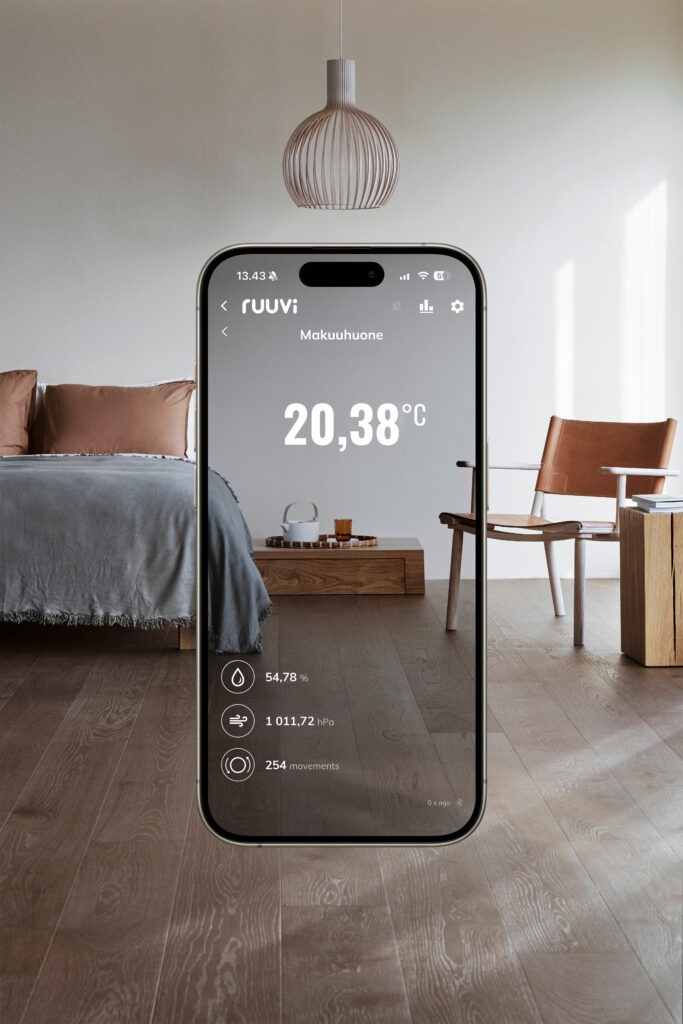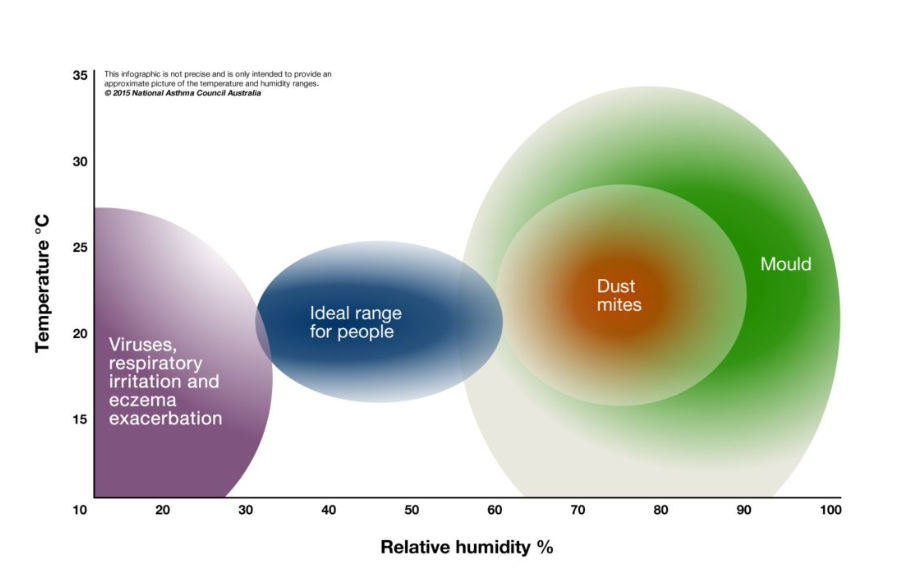At Timberwise, every floor is much more than just a surface beneath your feet. It is a promise of a breathable home, the power of Finnish forests, and uncompromising quality that endures everyday life for decades. We know that wood lives alongside people – it senses humidity, warmth, and light just as sensitively as we do.
That’s why we want to help you maintain conditions in your home that keep your floor healthy and your home feeling fresh every day. After all, the optimal indoor conditions for wood are also healthy for humans. Yet not everything can be seen or predicted: conditions change quietly and imperceptibly. How can we make the invisible visible?
This is where another innovative Finnish company steps in – one that shares our values of well being and healthy indoor air: Ruuvi. By combining Timberwise’s nature-inspired wood expertise with Ruuvi’s advanced measurement technology, your home’s conditions no longer have to be a matter of guesswork. With Ruuvi sensors, such as the RuuviTag, you can clearly see the environment your home and floors truly live in. Measuring enables proactive action and helps keep both wood and people in good condition – now and in the future.
Read more: www.ruuvi.com
More information about Ruuvi and its products: Henri Hakunti, henri@ruuvi.com, +358 400 773 070
(The article continues after the image with important information – make sure to scroll further!)

Below, we’ve compiled additional information on why the right relative humidity is important for both wood and human health.
Why Is the Same Relative Humidity Optimal for Both Wood and Humans?
Many factors affect indoor air quality, but one of the most important is relative humidity (RH). Surprisingly, both wood and humans thrive best within the same humidity range: around 40–60%. This is no coincidence, but is explained by the structure of wood and human physiology alike.
Wood and Humidity
Wood is a hygroscopic material, meaning it absorbs and releases moisture depending on the surrounding air. This affects its dimensions and structure:
- In dry air (<30% RH), wood loses moisture, shrinks, and may crack or warp.
- In humid air (>70% RH), wood swells, loses dimensional stability, and becomes susceptible to mold.
- In optimal humidity (40–60% RH), wood’s dimensional changes remain minimal and it retains its best properties.
This is why museums and concert halls carefully regulate humidity to protect wooden instruments, furniture, and artworks.
Humans and Humidity
Humans also react sensitively to humidity levels:
- In dry air (<30% RH), skin dries out, eyes become irritated, and respiratory membranes lose moisture. This increases infection risk and causes discomfort.
- In humid air (>70% RH), the air feels heavy and stuffy. Mold, dust mites, and bacteria thrive, which can harm health.
- In optimal humidity (40–60% RH), breathing feels pleasant, skin and mucous membranes remain hydrated and healthy, and health risks are minimized.
Why the Same Humidity Range?
Both wood and humans are biological materials containing significant amounts of water. They respond to surrounding humidity in the same way: too dry air draws out moisture and weakens them, while too humid air causes swelling, instability, and mold growth.
Therefore, maintaining 40–60% RH provides the most natural and balanced conditions for both the preservation of wood and human well being.
Summary
Controlling indoor humidity is not just a matter of building physics or comfort. By maintaining the right relative humidity, you create an environment where both materials and people can thrive. It’s fair to say that the optimal humidity range is a shared well being zone for wood and humans.
At around 40–60% relative humidity, the benefits are clear:
For wood: stabilizes dimensions, prevents cracking, swelling, and mold damage.
For humans: keeps mucous membranes moist, reduces infection risk, prevents mold and allergen growth, and promotes overall well being.
| Relative Humidity Condition (RH) | Effect on Wood 🌳 | Effect on Humans 👤 |
|---|---|---|
| Very dry air (<30% RH) | Shrinks, cracks, warps | Dry skin, irritated eyes, dry airways, increased risk of colds |
| Slightly dry air (30–40% RH) | May start to dry slightly, minor dimensional changes | Air may feel somewhat dry, but still tolerable for most people |
| Optimal humidity (40–60% RH) | Maintains dimensions and structure best | Skin and mucous membranes stay healthy, breathing is easy – the healthiest range |
| Slightly humid air (60–70% RH) | Wood may start to swell slightly, risk of mold growth increases | Air may feel stuffy, possible allergy symptoms, higher risk of mold growth |
| Very humid air (>70% RH) | Swells, molds, loses dimensional stability | Health risks (mold, bacteria, dust mites), air feels heavy and uncomfortable |

Sources – Wood and Relative Humidity:
Wood and Relative Humidity
-
Wagner Meters. “How Air Humidity Affects Wood Moisture and Dimensional Stability.” Explains how air humidity influences wood’s moisture content and size variations; wood is hygroscopic, absorbing and releasing moisture until equilibrium is reached.
-
Condair.com. Notes that relative humidity below 40% causes wood to shrink and change dimensions – for example, dry heated indoor air can lead to warping and cracking.
-
Venta Air GmbH; Stadler Form. Identify the optimal relative humidity for wood as approximately 40–60%, a range where wooden materials remain dimensionally stable and experience minimal expansion or contraction.
Humans and Indoor Air Humidity
-
PMC; Condairgroup.com. Multiple studies and reviews show that most adverse health effects are minimized when indoor air relative humidity is maintained between 40–60%.
-
Condairgroup.com; Condair.co.uk; MIT News. This humidity range supports the immune defense of the respiratory system, reduces virus survivability, and lowers the risk of respiratory infections.
-
ASHRAE (American Society of Heating, Refrigerating and Air-Conditioning Engineers). Recommends a relative humidity range of 30–60% as optimal for human wellbeing, minimizing bacterial growth and chemical reactions.